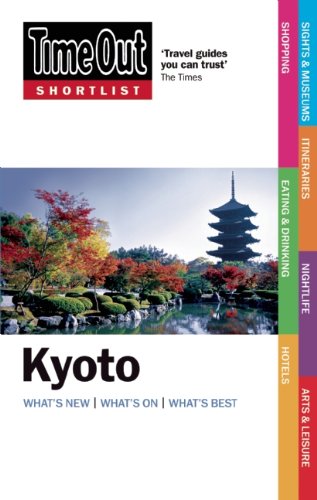 Nick Coldicott has a very nice drinking guide to Kyoto in the Japan Times today that I’d invite you all to read. It is framed entertainingly as a rebuttal to a critical review Nick’s book “Time Out Shortlist Kyoto
Nick Coldicott has a very nice drinking guide to Kyoto in the Japan Times today that I’d invite you all to read. It is framed entertainingly as a rebuttal to a critical review Nick’s book “Time Out Shortlist Kyoto” received on Amazon.com. The reviewer wrote angrily that the book placed to much emphasis on bars, cafes and restaurants and not enough on World Heritage sites. “I intend to make the case,” Nick writes provocatively in return, “that, though the temples and whatnot are very impressive, it’s worth going to Kyoto just for the drinks.” He then proceeds to take us on a short but expert tour of the very best drinking spots this city has to offer.
However, it’s not Nick’s article that I want to focus on today (despite the excellent photograph that accompanies it), it’s his book. Published last September the Time Out Shortlist Kyoto is without question, the most up-to-date guide to the city currently available. Inside you’ll find all the information you need to sample the city’s cultural treasures, local cuisine, traditional merchandise and plenty of good advice on where to relax or kick up your heels afterwards.
But beyond the tourist guide essentials this book also presents Kyoto, not as a fossil, but as a modern city alive in the present. Embedded within the guide are articles on local designers and design companies, tea houses that have given the art of tea “a contemporary accessible twist”, an unusual zen temple that houses it’s very own bar, and suggested itineraries both novel and traditional. Among those itineraries is one that pleased me greatly: “Kyoto Revamped” which takes you on a tour of the older, traditional buildings in Kyoto that while still maintaining their traditional grace have in recent years been renovated for modern purposes. Another itinerary, bravely proposes a “New Philosopher’s Path” as an alternative to the original admittedly pleasant scenic strolling route. This new path is a one-day crash course in “the city’s biggest ideas”; taking you through zen meditation, and other zen influenced arts, such as calligraphy, painting, gardens, tea ceremony, traditional zen cuisine – the lot!
I have to admit I was pretty impressed with what Nick achieved with this book. Though based in Tokyo, he has managed to put a lot of us long term Kyoto residents to shame with his ability to sniff out those hidden gems that even born and bred Kyotoites are unaware of. Is his book any more weighted toward food and drink than any other Time Out guide? Nope. And though it’s true that the World Heritage sites are “described in just one paragraph each”, this is necessarily so, as Kyoto has a LOT of shrines and temples and this is (quite literally) a POCKET guide. Anyway, people who use this book are most likely tourists, they’re on vacation and when you are on vacation finding a nice spot to eat and drink is extremely important too. No, I think perhaps that particular reviewer just likes complaining. He complains about the guides available at the sites themselves, at the lack of tours in Kyoto, and that more Japanese don’t speak “a decent English” [sic]. I think we can safely ignore him. However, don’t just take my word for it. Mr. Coldicott has plenty of writing online. In addition to the article mentioned above, may I recommend this piece on the Kyoto temple Kanga-an? Or just go to his website and have a browse. He’s written a lot you see. And he’s a damn good writer too.
Time Out Shortlist Kyoto is available from amazon.com
, amazon.co.jp
, and amazon.co.uk
.